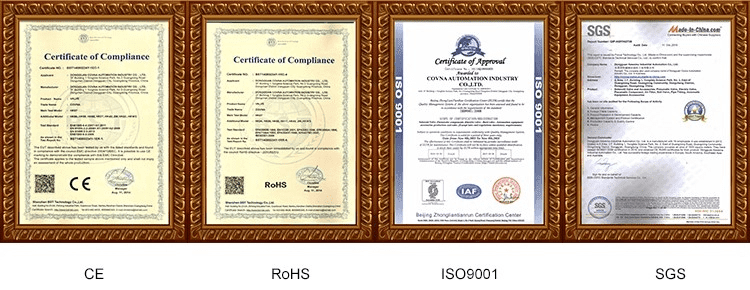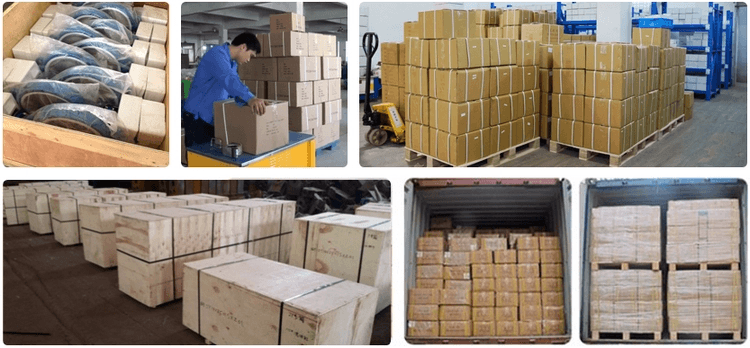COVNA Products


Stainless Steel 5000PSI High Pressure Electric Actuator Ball Valve
High performance 316 stainless steel ball valves are specifically designed for high pressure applications
Could be equipped with modulating or on-off electric actuator. Available in local / remote control electric actuator with LCD display screen to achieve the goal of industrial automation.
Its NEMA 4/4X weatherproof enclosure works with its anti-static nature to help ensure that it never wears down, while the 304 stainless steel composition provides it an extra layer of strength. Our motorized ball valve features a 20 second 90 degree cycle time.
As a proffesional high pressure electric actuator ball valve manufacturer, COVNA always provides customer first class product and service. Welcome to contact US!
- Model: High Pressure Electric Actuator Ball Valve
- Size Range: 3/8" to 4"
- Pressure Range: 16.0MPa~50.0MP
- Material: Stainless Steel
This series of electric actuators offers three models to meet different needs. The ON/OFF type actuator employs 90-degree fixed-point rotation design which works for basic switch control; the regulating type actuator allows stepless 0-90 degree rotation for precise flow control; the intelligent actuator features LED display capable of showing real-time valve position on the regulating type. The entire series is designed for universal AC/DC dual power supply, standard signal control system, emergency manual operation, and maximum output torque of 4000Nm which addresses the intelligent control and heavy-load reliability demand.
COVNA aims to provide our customers the best quality products with the most competitive pricing, on-time delivery and full warranty service with omprehensive service from start to finish, encompassing consultation through to after sales service, full support in every respect and ensure that you are accompanied at each stage of your project.
With two decades as an actuator valve manufacturer, we accomplish economies of scale and agile response to market demand with large-scale customization of all categories of products, utilizing three major production bases along with German production equipment. Each product undergoes a 100% factory quality inspection system to certify guarantee compliance with international standards including CE, TUV, ROHS, SGS, BV, ISO 9001, and quality control verified trust explosion-proof and fire-proof safety certification. Conventional products stock is maintained to guarantee daily shipment, offered delivery within industry standard 12 month warranty period. Customization of other product parameters is supported including multi-national standards JIS 5K/10K, ANSI 150lb-900lb which fully meets different industrial scenario customization demands.
The actuator on my automated valve operates, but the valve won’t turn. Why?
Most likely the valve stem or actuator coupling is broken.
Why doesn’t my valve open or close completely when the actuator operates it?
The electric actuator limit switches or the pneumatic actuator position stops are not correctly adjusted.
When I energize the solenoid on my pneumatic actuated valve, the valve won’t turn. How come?
Probably because there is no air pressure to the solenoid or dirt has jammed it. Also, debris might be trapped inside the valve. Or, the air pressure is not sufficient to operate the actuator. Remember: measure air pressure at the actuator, not at the compressor.
Can I buy an actuator from one manufacturer and mount it to a valve from another manufacturer?
Maybe. First, be sure that the actuator torque output is sufficient to turn the valve reliably. Second, you will have to fabricate a custom mounting bracket and coupling to connect the actuator to the valve.
What happens if I lose power to my electric actuator in the middle of an actuation cycle?
The valve will stop somewhere between full open and close. When power is reapplied to the original circuit, the actuator will complete the cycle.
I ordered a fail open pneumatic actuated valve by mistake. I needed a fail closed one. What can I do?
To make the change just remove the actuator from the valve and turn it, or the valve stem, 90 degrees and remount the actuator.
I’ve installed my automated valve in the line, but now I don’t know if the valve is in the open or closed position. How can I find out?
Remove the actuator from the valve and check the valve stem. Most ball valves have stem flats at right angles to the flow when the valve is in the off position. On butterfly valves check the stem flow arrow marking.
Do I have to have the solenoid valve that controls the air supply to my pneumatic actuator mounted right on the actuator?
Remove the actuator from the valve and check the valve stem. Most ball valves have stem flats at right angles to the flow when the valve is in the off position. On butterfly valves check the stem flow arrow marking.
How do I wire up my electric actuator?
Check the electric wiring schematic that came with the actuator for the correct hookup. Sometimes a copy is inside the actuator cover. If it is missing, don’t guess about the connections. Call the manufacturer for a schematic.
I’ve just installed an electric actuated valve and when I power it, it turns the valve 360 degrees and won’t shut off. What’s wrong?
The actuator is wired incorrectly (check the schematic accompanying the actuator), or the external control switch is not the correct type for the actuator.
My electric actuators cycle time is way too fast, can I slow it down?
Not unless you bought it with an optional speed control.
I just replaced a solenoid valve with an electric actuated valve and it won’t work. Why?
Actuators and solenoid valves require different types of electrical control switches. SPDT for actuators, SPST for solenoids. Check the actuator wiring schematic for the correct wiring and switch type.














